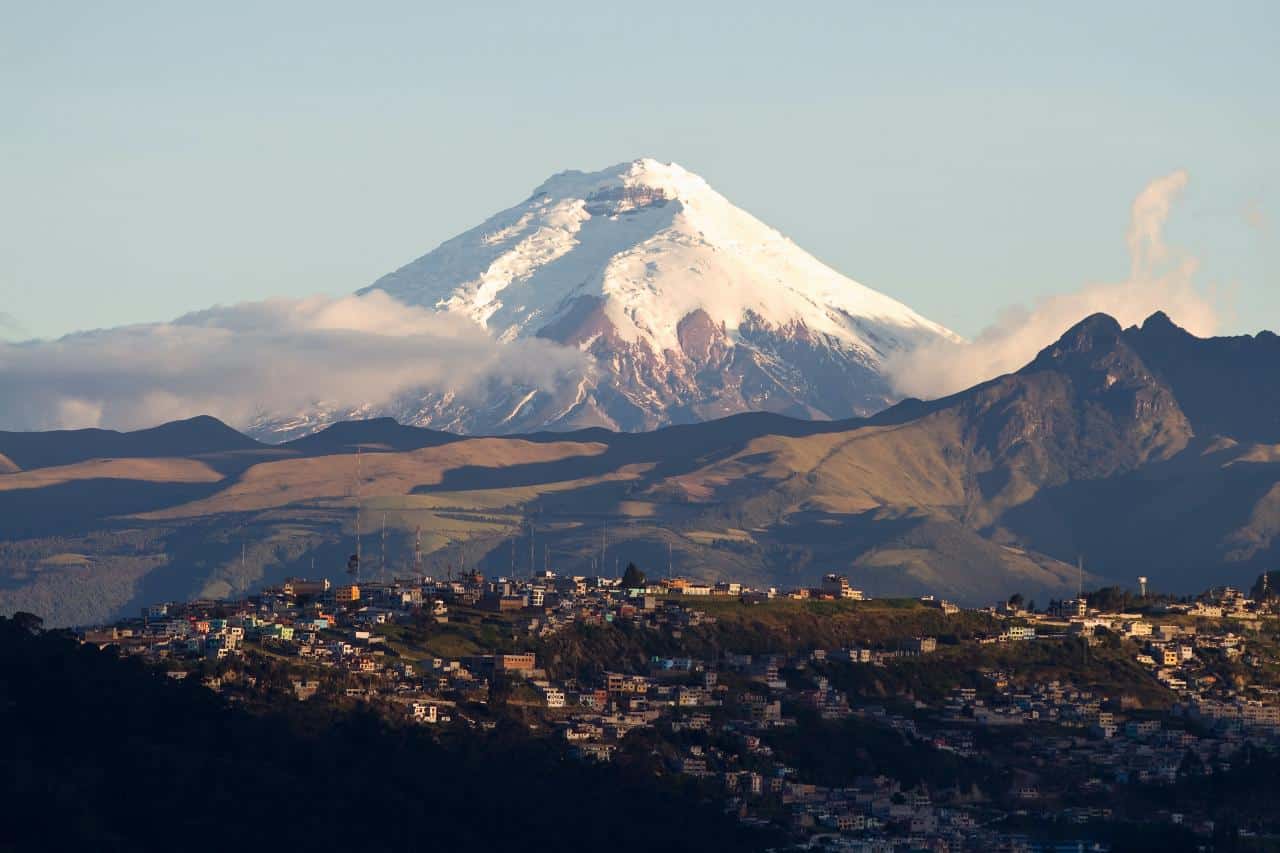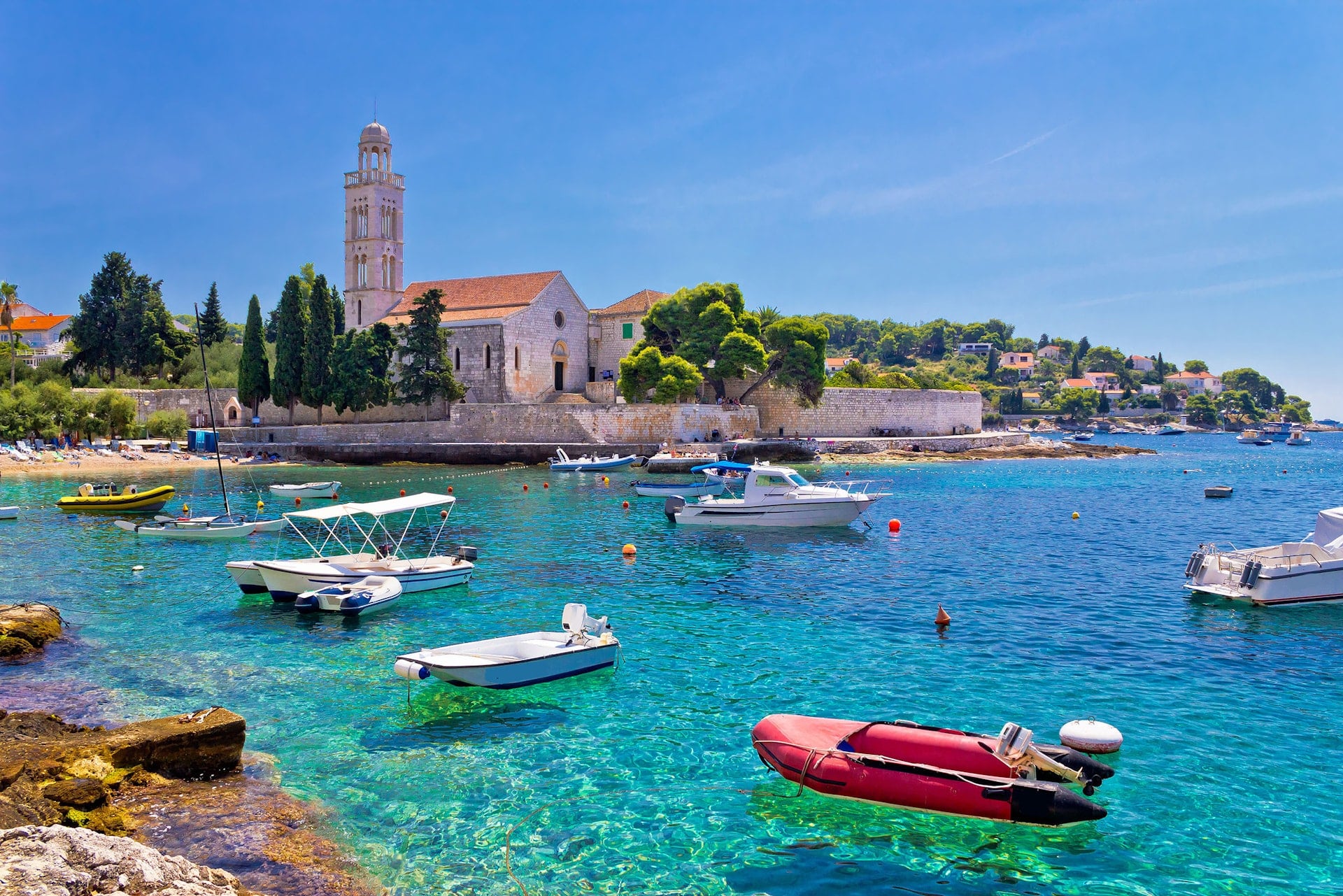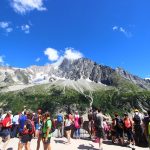Ecuador affords a few of the most unbelievable outside experiences on earth, from browsing on stunning seashores to treks by the Amazon jungle. The fourth-smallest nation in South America affords experiences to rival something in Brazil, Argentina or Chile, all packed right into a small house that is straightforward to discover by bus, boat or airplane.
With top-flight pure wonders such because the Galápagos, the Andes and the Amazon Basin, the alternatives for wildlife watching and bucket-list adventures are limitless in Ecuador, and this compact nation additionally gives myriad cultural points of interest.
Every time that you must pause to acclimatize to the altitude or relaxation after an expedition, Ecuador’s cities and villages provide stay music, scrumptious native delicacies, energetic markets, historic structure and distinctive festivals to take pleasure in. Listed below are the perfect issues to do in Ecuador.
Uncover the world’s most intriguing experiences with our weekly e-newsletter delivered straight to your inbox.
1. Marvel on the wildlife of the Galápagos Islands
If we’re speaking must-dos, going wildlife watching within the Galápagos Islands sits on the prime of the record in Ecuador. A visit to those distant islands sitting 906 km (563 miles) off the Ecuadorian coast is a South American safari, each terrestrial and marine, starring such charismatic creatures as seafaring iguanas, blue-footed boobies, gigantic Galápagos tortoises, diminutive penguins and a mind-bending range of birds and sea life.
Planning tip: Visiting the Galápagos needn’t break the bank. In case your finances will not stretch to an all-inclusive cruise, DIY vacationers can fly in and reap the benefits of public ferries between accessible islands, land-based excursions and even last-minute reductions on organized cruises.
 A woman snaps an image of a marine iguana on the Galapagos Islands © shalamov / Getty Pictures
A woman snaps an image of a marine iguana on the Galapagos Islands © shalamov / Getty Pictures
2. Spot humpback whales from Isla de la Plata
Nicknamed ‘The Little Galápagos’ or ‘The Poor Man’s Galápagos,’ tiny Isla de la Plata is a extra inexpensive various in case your finances will not cowl a Galápagos go to. The island is accessible on a day journey from Puerto López or Salinas, and also you’ll see blue-footed boobies, frigate birds and albatrosses, in addition to tortoises, lizards and crabs. The perfect time to go to, although, is from June to September, when humpback whales migrate by these waters. Time it proper, and also you’re virtually assured to identify considered one of these majestic creatures – not a nasty comfort prize for lacking the Galápagos!
Planning tip: In the course of the whale migration season (June to September), whale-watching excursions mixed with visits to Isla de la Plata depart usually from Puerto López. The journey to the island takes over an hour and will be tough; deliver a rain jacket for the wind and spray.
 The historic metropolis of Cuenca is a vibrant hub for Ecuadorian tradition © IRYNA KURILOVYCH / Getty Pictures
The historic metropolis of Cuenca is a vibrant hub for Ecuadorian tradition © IRYNA KURILOVYCH / Getty Pictures
3. Hit the highlands from Cuenca
Certainly one of Ecuador’s most beautiful cities, historic Cuenca has a surprising mountain backdrop and streets stuffed with Sixteenth-century colonial structure. It is a beautiful base for native treks and day journeys to the archaeological web site of Ingapirca, Volcán Chimborazo, Parque Nacional Cajas and native villages with busy markets frequented by Indigenous communities. Take time to discover Cuenca’s cathedrals, museums, handicrafts markets, energetic cafe tradition and an interesting clutch of high quality eating places and microbreweries.
4. Enterprise deep into the rainforest alongside the Río Napo
For a once-in-a-lifetime expertise, pull on some knee-high rubber boots, hop right into a motorized canoe from Coca and head deep into Ecuador’s Oriente, the place the Río Napo melts into the Amazon River. The expertise does not come low-cost, although – even ‘finances’ river lodges are all-inclusive, and all meals, water, provides and workers have to be shuttled in by boat. Nonetheless, lodge stays are a requirement, each to guard Indigenous tribes from undesirable contact and to guard guests from the hazards of the jungle.
Days spent exploring the Napo and its tributaries will embrace treks by dense rainforest in the hunt for uncommon birds, monkeys, tapirs and even anacondas. When you’re fortunate, chances are you’ll spot pink river dolphins, river otters or the air-breathing arapaima – one of many world’s largest freshwater fish.
Planning tip: Together with the pure wonders of Amazonía, take time to go to Kichwa villages that work with native lodges to introduce guests to their tradition by sustainable, community-run tourism initiatives.
 Ecuador’s nationwide parks present a house for elusive jaguars © tane-mahuta / Getty Pictures
Ecuador’s nationwide parks present a house for elusive jaguars © tane-mahuta / Getty Pictures
5. Discover the Parque Nacional Yasuní
Parque Nacional Yasuní is a surprising, distant nook of Ecuador and the biggest nationwide park on the mainland at 10,227 sq km (3949 sq miles). Offering a house for uncommon wildlife, together with jaguars, nocturnal curassows and large armadillos, this Unesco Biosphere Reserve is among the most biodiverse locations on Earth.
The reserve can be house to the small, self-isolated Tagaeri and Taromenani tribes, who proceed their conventional coexistence with the jungle with out interference from the skin world. Most Río Napo lodges organize visits to different indigenous communities that welcome outdoors guests and journeys to see colourful parrots descending in a spectacular show alongside the riverbanks at Yasuní’s well-known salt licks.
Planning tip: To discover the reserve, you possibly can keep throughout the park’s boundaries at eco-lodges, such because the Napo Wildlife Middle, or camp on an adventurous tour from Coca. Both manner, the journey will embrace wildlife and cultural encounters.
6. Hike the Quilotoa Loop
Widespread for good motive, the multi-day Quilotoa Loop trek traverses verdant hills and valleys, connecting the scattered villages of Cotopaxi province. Alongside the best way, you possibly can peek into native artwork galleries, hit Kichwa markets (should you time it proper) and take within the beautiful inexperienced crater lake of Laguna Quilotoa. The Quilotoa Loop affords a scenic mixture of cultural immersion and cardiovascular train – trek with a neighborhood information to get the perfect from the expertise.
Planning tip: The driest season for climbing the loop is June to September; begin from Latacunga, prep for chilly and moist climate and produce trekking poles to cope with the uneven pathways.
 Quito’s historic streets warrant a number of days of exploring © f11photo / Shutterstock
Quito’s historic streets warrant a number of days of exploring © f11photo / Shutterstock
7. Hop on a motorcycle in Quito
The ciclopaseo is Quito’s model of the ciclovía – a sequence of formally sanctioned cycle routes that shut down 30km (18.6 miles) of the town’s streets to motorized site visitors each Sunday from 8am to 2pm. The town’s biking tradition promotes sustainability, supporting people-centered occasions, cafe tradition and pop-up markets, and a motorcycle is a good way to discover the Unesco World Heritage-listed Previous City, with its colonial structure and hovering rooftop views.
However do not make the error of limiting your explorations of this high-altitude capital metropolis to the historic middle. Outlying neighborhood pockets reminiscent of La Floresta and La Mariscal home jazz bars, artwork galleries and comfy eating places the place you possibly can ease again and really feel like a neighborhood.
8. Go whitewater rafting round Tena
The rivers round Tena provide every thing from light rafting journeys to thrilling whitewater on Class III to Class IV+ rapids within the humid lowlands of the Oriente. Licensed operators have reserving workplaces round city that may arrange a rafting journey greatest suited to your skills. If adrenaline isn’t your factor, Tena additionally occurs to be an interesting little lowland city with a cute malecón (esplanade), an lively bar scene and a buoyant mix of native and ex-pat vitality.
Planning tip: For rafting journeys, September by February is the perfect season for white water, with the height rafting months being October and November.
 A surfer makes the many of the waves in Montañita © FOTOGRIN / Shutterstock
A surfer makes the many of the waves in Montañita © FOTOGRIN / Shutterstock
9. Surf the breaks of Montañita
The seashores of south-central Ecuador are famed for his or her seaside breaks, and Montañita has cemented its place because the nation’s touchdown spot for novice and skilled surfers. The boho ambiance attracts backpackers, surf lovers and solo vacationers, who experience Montañita’s get together scene and make full use of the seashores. For straightforward entry, fly into Guayaquil and take a two-hour bus experience as a substitute for the nine-hour bus experience from Quito.
Planning tip: Quite counterintuitively, the perfect time of 12 months to come back is throughout Ecuador’s wet season from December to Might, when the solar is hotter, and the air feels more energizing after bursts of rain.
10. Purchase snacks and souvenirs within the Otavalo market
The most important and best-known Indigenous market in Ecuador, the colourful Otavalo market is open each day, year-round. Distributors provide every thing from contemporary produce to Panama hats, wooden and leather-based handicrafts, jewellery and alpaca-wool sweaters. Hunt down attention-grabbing issues to eat, reminiscent of llapingachos (Ecuadorean fried potato desserts) from meals stands primarily based in and across the market.
Planning tip: The busiest market days are Saturday and Wednesday – get right here early to beat the crowds. When you’re not staying on the town, it’s straightforward to go to the market on a day journey from Quito.
 The towering Cotopaxi volcano is considered one of Ecuador’s most putting landmarks © Natursports / Shutterstock
The towering Cotopaxi volcano is considered one of Ecuador’s most putting landmarks © Natursports / Shutterstock
11. Climb to the summit of Cotopaxi
At 5897m (19,347ft), Volcán Cotopaxi’s conical peak will be seen from a number of provinces away. On a day journey from Quito or Latacunga, you possibly can hike, mountain bike or experience horseback on its rugged slopes, that are protected as a part of the Parque Nacional Cotopaxi. When you discover, look out for native wildlife reminiscent of condors and deer. Climbing to Cotopaxi’s summit requires some planning and a bit of coaching with a licensed information, however the expertise of summiting at daybreak is properly definitely worth the midnight begin.
12. Meet the creatures of the Cuyabeno Wildlife Reserve
The Cuyabeno Wildlife Reserve is one other vastly biodiverse park within the Oriente, with humid ecosystems starting from seasonally flooded woodlands to completely inundated rainforest. These damp zones are house to tapirs, caimans, monkeys, sloths, pink river dolphins and hoatzin (giant, prehistoric-looking birds), in addition to tons of of different chook species. Regardless of the reserve’s remoteness, visiting will be cheaper than taking a visit to Parque Nacional Yasuní.
Planning tip: To assist defend Cuyabeno’s Indigenous individuals and wildlife, the rainforest can solely be visited as a part of an organized package deal, with lodging at Cuyabeno Lodge, Jamu Lodge or one of many different lodges within the reserve.
 Playa Los Frailes seaside in Machalilla Nationwide Park is considered one of Ecuador’s greatest seashores © Holger Leue / Getty Pictures
Playa Los Frailes seaside in Machalilla Nationwide Park is considered one of Ecuador’s greatest seashores © Holger Leue / Getty Pictures
13. Bliss out on the central seashores
Except you’re a surfer, Ecuador most likely will not be prime of your record of seaside locations, however its stunning shoreline gained’t disappoint lovers of sand, sea and solar. December by April is the perfect season for sunning and browsing in Manabí and Esmeraldas provinces, the place you’ll discover a string of beautiful seashores.
Canoa is a laid-back browsing village with just a little nightlife and backpacker facilities. To the south, a hike by Parque Nacional Machalilla will ship you to Playa Los Frailes, considered one of Ecuador’s most stunning seashores, backed by steep bluffs. To the north, the fishing village of Mompiche has miles of peaceable sand and, blessedly, not a lot else.
14. Trek to the summit of El Altar
Ecuador’s fifth-highest mountain, Volcán El Altar tops out at 5319m (17,451ft) and is considered one of three mighty volcanoes inside Parque Nacional Sangay. A trek to the summit, which will be tackled in a single day or unfold over three days, is an enchanting journey by diverse ecosystems, starting from tropical forest to páramo (alpine tundra) and glacial lagoons.
Planning tip: Treks to the highest of Volcán El Altar will be organized in Riobamba; entry is from the Hacienda Releche close to Cadelaria, a 30-minute bus journey from Riobamba.
 Vilcabamba is surrounded by beautiful climbing nation © nicolasdecorte / Getty Pictures
Vilcabamba is surrounded by beautiful climbing nation © nicolasdecorte / Getty Pictures
15. Chill out within the mountain city of Vilcabamba
Easygoing vibes pervade the air within the mountain city of Vilcabamba, maybe contributing to the longevity that locals are stated to take pleasure in. The ambiance is unquestionably conducive to slowing down and absorbing the bucolic mountain setting. Whether or not you select to do that from the porch of a café, from the again of a horse or on foot on a path winding by undulating Andean valleys is as much as you. Put up-hike, Vilcabamba plies vacationers with massages, meditation and gastronomic love.
Planning tip: Vilcabamba additionally gives a terrific base for journeys to Parque Nacional Podocarpus and birding at Tapichalaca Reserve; make preparations with native journey tour operators.
16. Soak away your worries at Papallacta
Who couldn’t use a soak in a mineral-rich scorching spring? When you really feel you’ve earned just a little luxurious after getting soaked in high-altitude downpours or buffeted by wind on a hut-to-hut trek, e book a keep in Papallacta (ideally, on the night time earlier than your flight out of Quito) for a decadent spa-style scorching springs expertise.
Spend the night and morning soaking in outside scorching springs, watching steam curling into the mountain air whereas the nice and cozy mineral waters restore your non secular and bodily stability. If you cannot get to Papallacta, our scorching springs runner-up is Baños, a busy hub for outside actions with spas on each nook.























